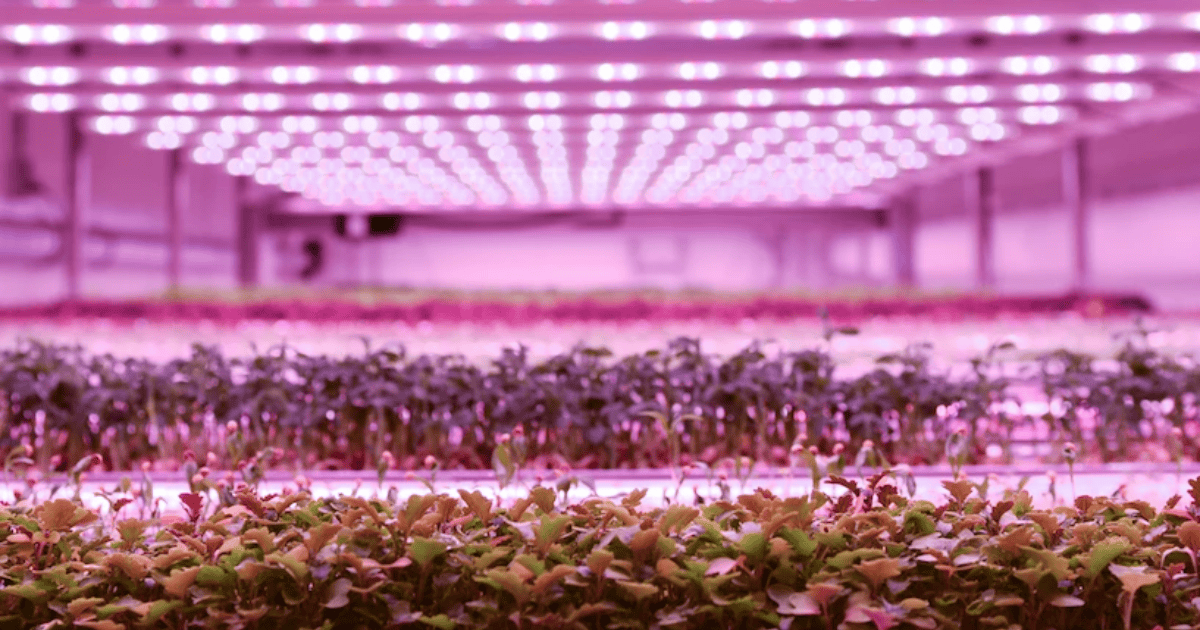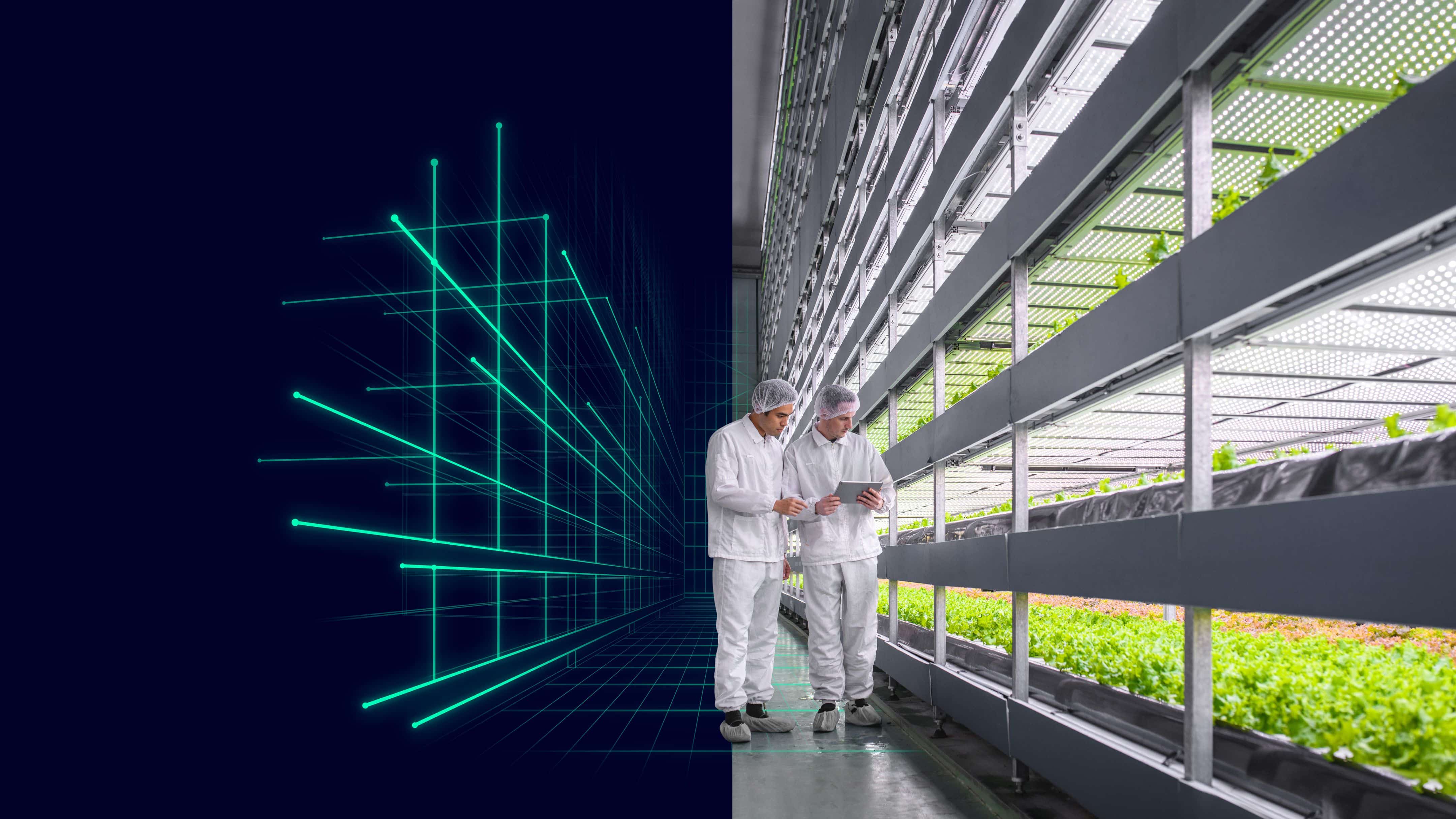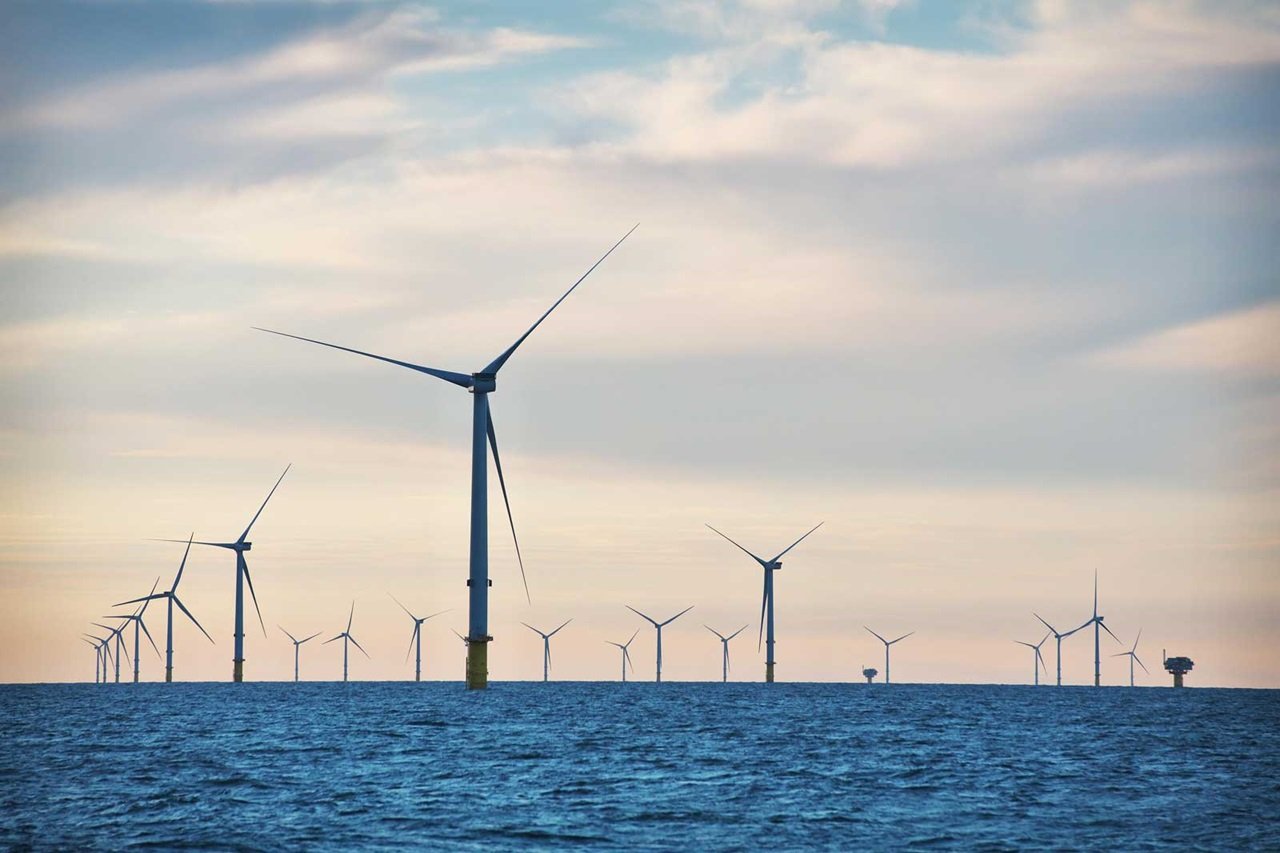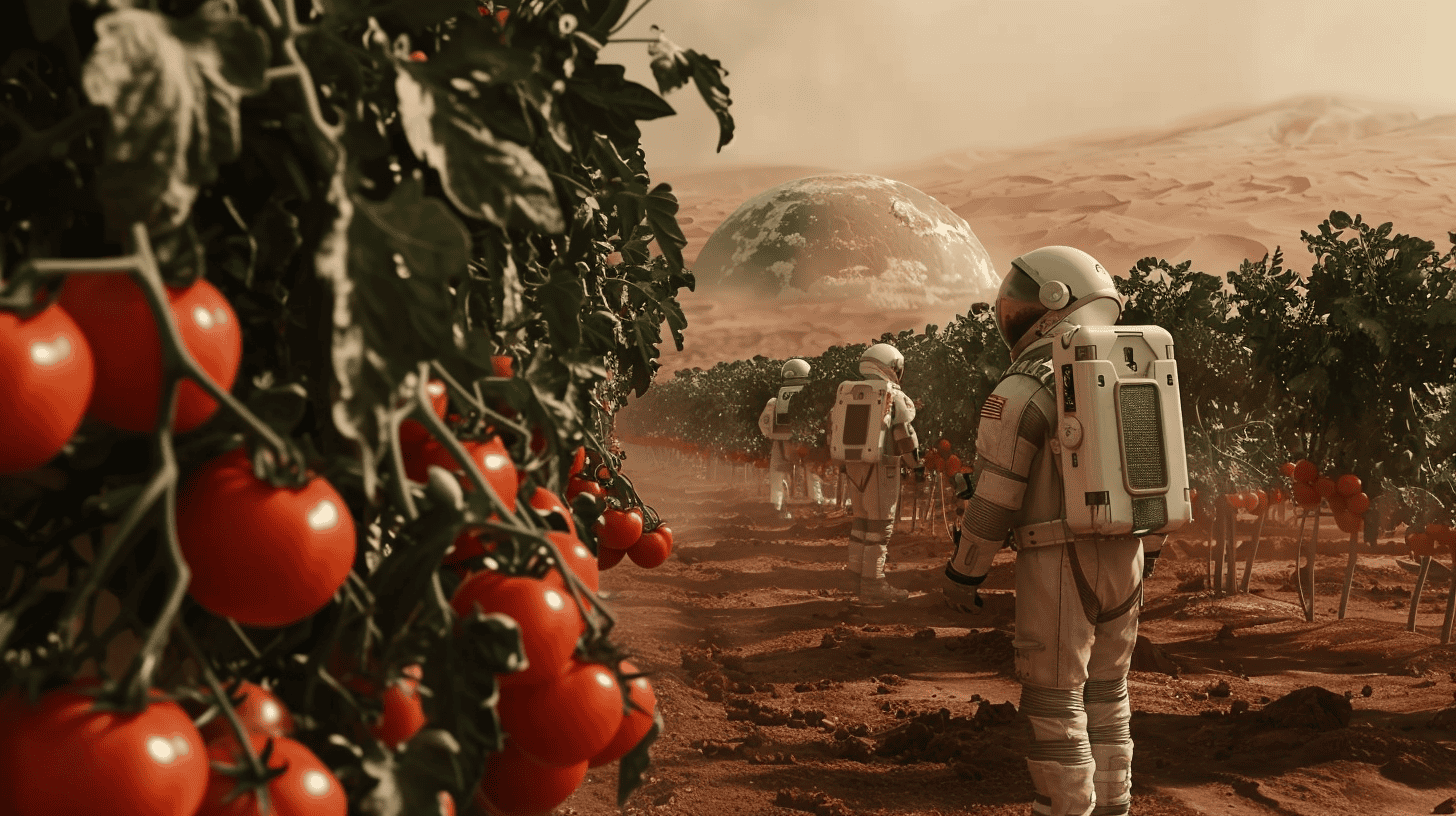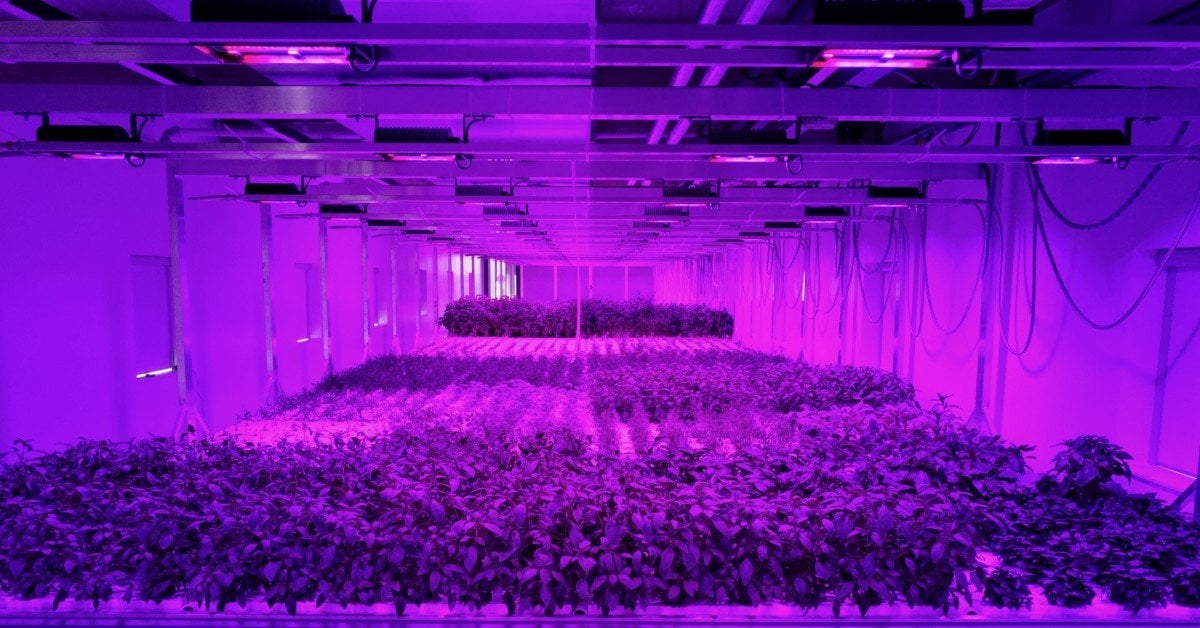
Indoor farming or vertical farming is the practice of producing food on in vertically stacked layers that are installed indoors – in a warehouse, in a skyscraper, even in a big container. Seven Steps To Heaven is the company from Eindhoven founded by Gertjan and Lianne Meeuws, which grows fresh produce in the high-tech vertical farm using LEDs instead of daylight in combination with temperature and evaporation control. The CEO of the company, Gertjan Meeuws, says that the biggest difference between traditional farming and vertical farming is that an indoor farm can operate where the consumers live – even in the centre of a big city. “Instead of having a long supply chain where the source of your fresh produce is the whole world, all the necessary vegetables come from one local farm. Indoor farming is the new supply chain,” says Meeuws.
“Organic farming 2.0”
“Vertical farming is not invented by the farmers,” the CEO of Seven Steps To Heaven says. “Usually traditional farmers work far away from the consumers and they have to focus on the yield on making a living most of all. Breeding companies are developing new varieties of vegetables with the emphasis on the resistance, high yield but not on the taste and nutrition. Indoor farming is also about yields and making a living just like traditional farming is, but in addition to those we also focus on growing safe, tasty, nutritious produce – as close to the market as possible.”
Meeuws believes that traditional farming and indoor farming can cooperate – it is not only the one or the other: “For instance, our company can grow young plants that can be planted in a greenhouse or in an open field and they are more vital than the plants grown in the traditional way. We can make young tomato plants that have extra energy, so when they leave our nursery, they still benefit from that energy during the first weeks after being planted in the greenhouse. That even allows the growers to use zero or hardly any pesticides because these plants are so strong. There are lots of ways in which our technology and know-how experience can support traditional farming and breeding.”
Quality, taste and nutritional levels
All the plants have photosynthesis – they take carbon dioxide from the air and produce oxygen and glucose. Meeuws explains that there are three levels of plant metabolism. On the first level the plants produce just enough sugars to merely stay alive, on the second level they produce enough glucose for maintenance and start growing, on the third level the plants make more sugar that they need for their growth and start producing secondary metabolites – they are better known as vitamins and antioxidants, which have enormous importance to our health and wellbeing. Secondary metabolites are important to the life of the plants just as well: plants use those substances for the protection against pests or for the attraction of insects involved in pollination. Meeuws says: “When the plants reach the third level of metabolism, they start giving something like a signal “Environment, don’t eat me!”
Making the plants reach the highest level of their metabolism that would fill them with vitamins is easier if the plants are grown in the controlled environment of an indoor farm than in the open field. In addition to this, a vertical farm operator doesn’t have to harvest the produce unripe for transportation reasons because the concept of an indoor farm involves local consuming. “Most of the fresh produce that we eat today is harvested way too early – the plants don’t reach their full potential, so they are not as tasty and as nutritious as they could have become,” says the co-founder of Seven Steps To Heaven.
“A modern supermarket in Abu Dhabi, Algeria, Rwanda or Angola looks almost the same as Jumbo or Albert Heijn. But if you go to the fresh produce department, you will find that the vegetables are 2-3 times more expensive than in the Netherlands.
Why indoor farming
Indoor farming can be a promising solution for those regions of the world where the production of vegetables is limited, or fresh produce is not fully safe to eat. Safety issues arise in the areas where farmers have to use lots of chemicals in order to save the yield – and there are quite many places like that in our world, says Gertjan Meeuws.
Indoor farms can bring considerable benefits to the regions where the growers and the consumers are separated by long distances. One of the areas where indoor farming can show its true potential in Africa. Meeuws describes African cities as urban areas of great size – much larger than cities in Europe but with not much arable land available in the around the cities. Very often transportation from the farms to the cities takes 2-4 days because the roads are not good. In addition to this, in Africa, there is not much water for the crops during the dry season.
Meeuws says: “A modern supermarket in Abu Dhabi, Algeria, Rwanda or Angola looks almost the same as Jumbo or Albert Heijn. But if you go to the fresh produce department, you will find that the vegetables are 2-3 times more expensive than in the Netherlands. And the quality is variable: vegetables are not always good and fresh. That is why Africa has a huge potential for vertical farming – and actually, it’s the same all over the world for lowering the prices and increasing the quality of fresh produce.”
How affordable is an indoor farm? In order to build a vertical farm, one needs an investor and an operator of the farm, and this doesn’t have to be the same company. “In traditional farming the farmer usually both owns and operates the farm, but we think that it might be an advantage to split those functions between two different parties. We see the future of vertical farming in the model consisting of property companies and the operating companies leasing the farm from the property companies. This method can help to speed up the process of building indoor farms,” says Meeuws.
”If we want to waste less, we should be able to predict what the consumers will be asking – not today, but in 5-6 weeks”
Vertical farming for the future
“If we want to feed 10 billion people in the next three decades in a rational way, we need to make a distinction between the food that is just mere fuel to the body (like corn, wheat, soybeans) and the food that people need to grow or to repair their bodies – vitamins, antioxidant, etc. Combining those two types of food in a smart way, we will be able to feed people all over the world with the food which is maybe not cheap but affordable,” says Meeuws. “Balanced nutrition is important because if the children receive the food that they really need in the first 4-5 years of their living, their brains develop better, and the lifelong costs of healthcare are lower.” The CEO of Seven Steps To Heaven believes that it is more reasonable to spend a little more on safe food of good quality than to spend much more on medicines and hospital treatment in the future. “We need a more holistic approach to agriculture – it cannot be treated with no relation to other disciplines. Healthcare should be among those disciplines so that the food could become medicine instead of pharmaceutical products.” A multidisciplinary approach to vertical farming is what the company already uses in its work.
In the future, the development of indoor farming might change the work of meal kits delivery services like HelloFresh. “Now you get a subscription, you order a box and there are all the products that you need to cook a meal for a family. Today in this box groceries delivery services put a combination of products that they have been able to source. The next step is to stop sourcing and to start growing the produce by themselves,” says Meeuws.
“The whole retail landscape of today is based on overproduction. That is why tomatoes, cucumbers and other vegetables are available for delivery to our homes any time. If no one buys these products, 40 per cent of everything we grow will be thrown away. That is one of the reasons why food is expensive. With the development of indoor farming a consumer can be a member a family farm supplying fresh produce for a certain number of local families – in these circumstances the growers know what and how much they should produce, so they can keep the production in balance,” says Meeuws. ”If we want to waste less, we should be able to predict what the consumers will be asking – not today, but in 5-6 weeks. As long as we accept last minute orders and delivery tomorrow of fresh produce, we can only keep on overproducing – and that is not a smart way to feed the rapidly growing population of our world.”
Photo: © Gertjan Meeuws




